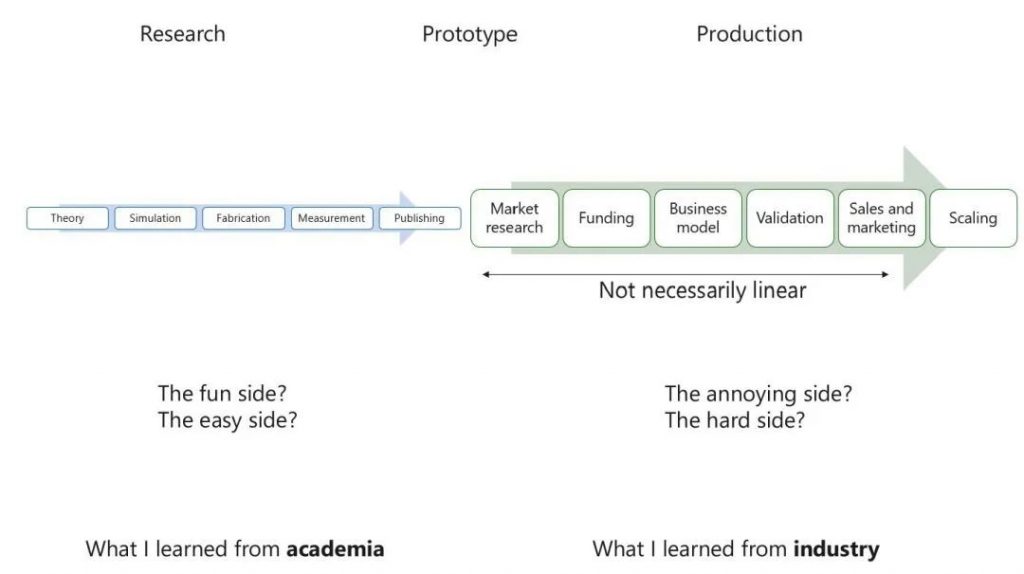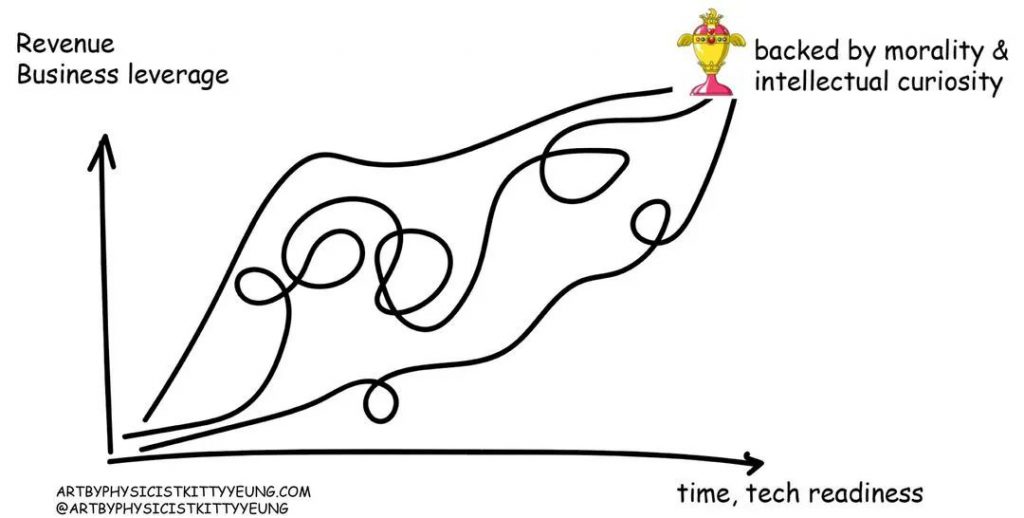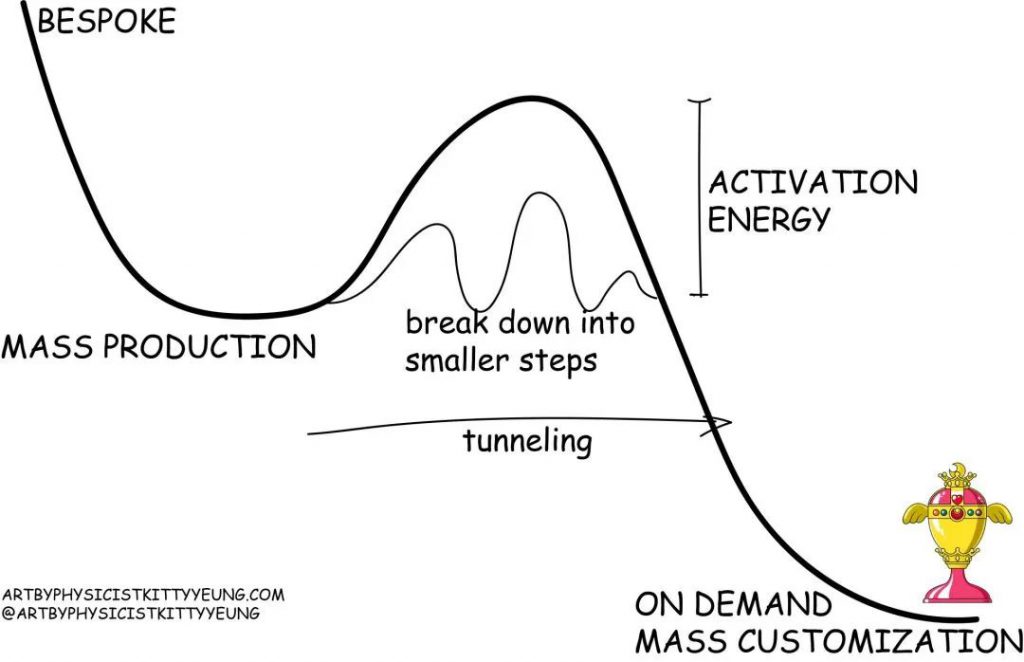
Kitty Yeung
A 2006 Graduate of SCIE
Graduated from the University of Cambridge, UK
Ph.D. Graduated from Harvard University
Currently working at Microsoft Corporation
Learn, strategize, produce, learn, strategize, produce…on steroids. I’m enjoying this startup tempo, especially when your whole team is learning the same things together. Remember when we were students, peer studying groups were proven to be effective? This should be carried on even in corporations and as one’s organization gets bigger. The interesting thing about being in the workforce in the information era is that people who are 10-30 years older than you are learning the same new things, driving the same new industries and reading the same new books. No more relying on legacy experiences in a specific vertical.
When I just started my intrapreneurship full-time, I still thought there were so many things in business we don’t learn in science and technology R&D. But I began to realize that we did learn them – the core methodologies – we were just not trained to map our formal education to the practical areas in industry. I understand some of us who are highly technical tend to shy away from anything closely to do with money. We may prefer narrowing ourselves in our own “pure” fields of study until retirement, because the rest just seems too fluffy and human-made-up.
However, building a startup is nothing different from what we learn in scientific research. We observe a phenomenon, come up with a theory to try to describe it, maybe run some simulations and design an experiment to validate our theory. Just as how physics is the study of nature, we use a startup to study the market – the nature of economy. It’s a complex many-body system, just like in condensed matter physics. If our theory (hypotheses) is correct, the business has a reason to scale. If not, we may discover something fundamental about nature. Either way, it is exciting.

As Bob Dorf and Steve Blank put it, “a startup is a temporary organization designed to search for a repeatable and scalable business model.” It is not a smaller version of a bigger company. It is also not set up for claiming glory, which we see often. An experiment fails most of the time. Even with the technology, a wrong business model still fails. Even if someone else has built the technology first, you can still build a successful business with leverage. Learning and correcting are what’s leading to occasional/eventual successes.
My first-hand experiences in quantum computing and fashiontech made me compare seemingly different industries to find commonalities manifested in people’s pursuits. Every industry has a holy grail, which should be backed/driven by morality or intellectual curiosity: for quantum computing, it would be to reach millions of qubits, in order to simulate nature; for fashiontech, it would be to reach inventory = 0, MOQ = 1 and SKU = infinity, in order to reduce waste and pollution.
There are many paths that lead to the same result. Although a holy grail may not be completely reached, given the economic system we live in, for achievable goals that can define how the world evolves, one builds a business to solve some problems. For unachievable ideals that’s good for the society, one relies on writing books to shape how people think.

Along the way, constraints and conditions have to be optimized, such as revenue and business leverage. The discrepancy in the approaches and how people think are what cause competition and sometimes animosity. If the effort is driven by morality, empathy allows us to understand we all want the same good result and collaboration.
In fashion, we try to move from overproduction to a sustainable model but there is tremendous hurdle carried forward from historic mode of production and societal structure. Even though the industry knows that mass production has led to environmental exploitation and workers rights violations, it still behaves this way because, paraphrasing Freakonomics (by Steven Levitt & Stephen Dubner), “if morality represents an ideal world, then economics represents the actual world” (in my words, math is how an ideal world should be; #physics is how the real world is).
To change how the industry works is like a phase transition, which requires an activation energy to jump the hurdle. There are smaller steps with lower activation energies, like catalysis, including consumer demand, digital processes, supply chain connectivity and factory automation. Could there be conditions for tunneling, i.e. a completely different scalable way of making clothes that is so much more efficient than anything existing?

Growth of economy is like increate of entropy. We know the latter is bound by the laws of physics. We do not know if consciousness of some sort is involved in making the latter happen. But we do know the former is driven by human choice. For ones who prioritize the former, predicting where the market is leads them to fuel the increase of entropy. But we start to observe results that are against our morality. Morality holds us back from indulging in the most money-making paths, while resenting others who choose those paths because society deems local gains of entropy a success.
Interestingly, phase transitions also happen because their entropy is favored, globally. Phase transitions can happen when there’s enough activation energy. It starts with local sites being excited. When local sites reach critical mass, the transition happens very fast. Suddenly the entire matter changes to a different phase. If the activation energy is not enough, which comes from human choice, local site excitation gets absorbed by the reservoir of existing phase. Then no change globally. Sometimes the activation energy is intentionally extinguished by human choice, guided by their individual morality which has existing critical mass because of the societal definition of success.
Everything else is hype, which tends to be louder and noisier. Temperature makes noise but also provides energy. This is why in every hype there is some truth to it. Pursue truth (veritas).

- Article | Kitty Yeung
- Pictures | Kitty Yeung


















